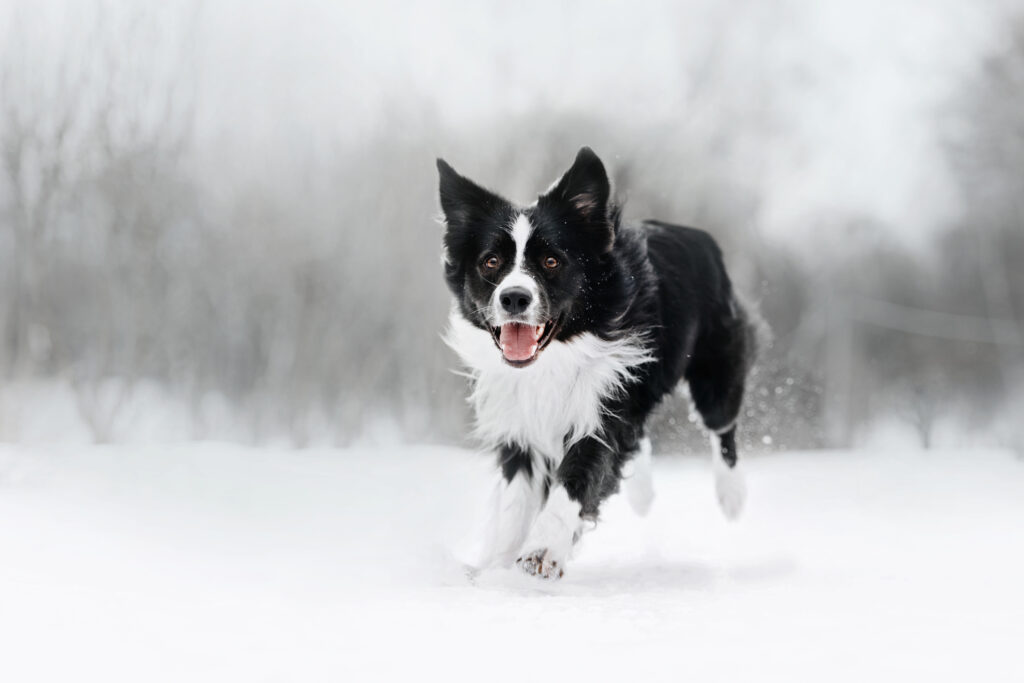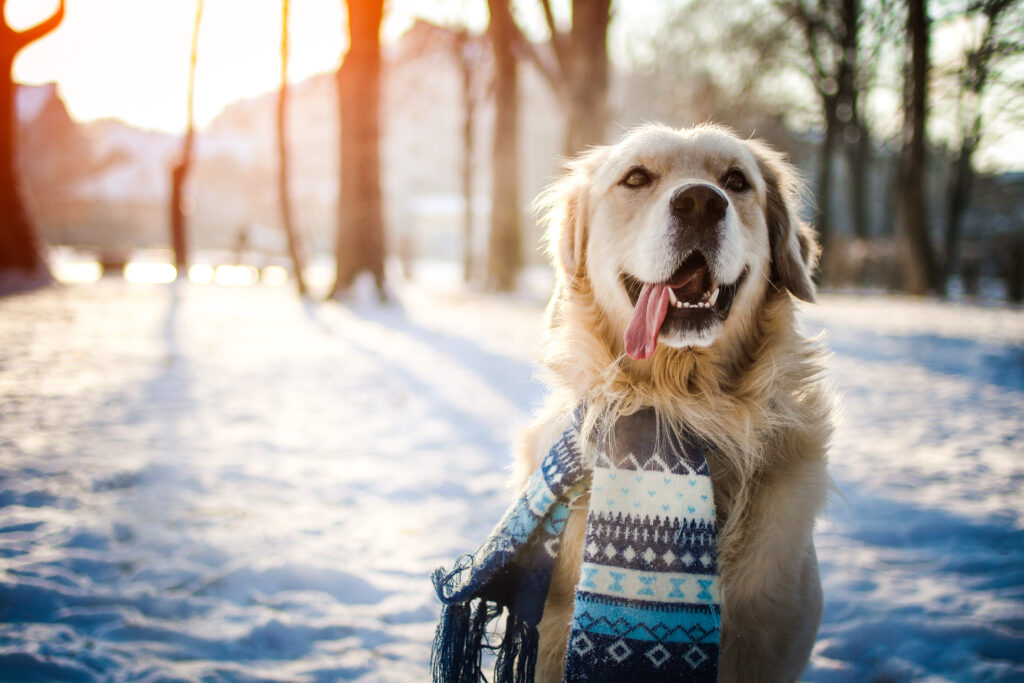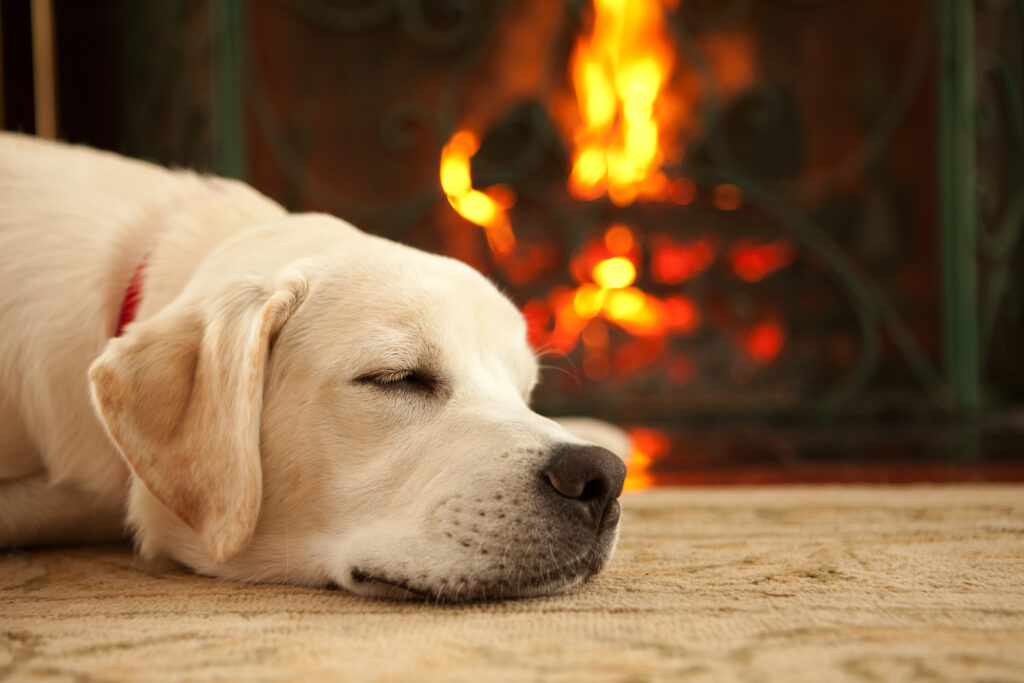Like humans, many dogs love the snow. Snow provides a different texture to step on, changes the look of the landscape, and has a distinctive scent to explore.
As much as it can be fun to take your dog out for activities in the winter, the cold weather can be dangerous to our four-legged friends. Although their furry coats provide warmth, snow and the cold temperatures can negatively impact their health if we aren’t responsible dog owners.
It is every dog owner’s duty to take the necessary precautions to keep their dog safe in snowy and icy conditions, especially during major winter storms. In this article, we’ll show you how to look out for signs your dog is cold, provide vital snow safety tips, and explain how to keep your pup safe and healthy during the winter months.
Remember - every dog is different
Some dog breeds are more accustomed to colder conditions than others, as they were bred to withstand the harsh, cold weather. For example, a Siberian Husky will begin to enjoy themselves in the snow at the same time as a Maltese could get hypothermia.
Large dog breeds with a thick double coat to protect them from the cold tend to flourish in the snow, while others need supervision and a limit on how long they stay outside. Keep your dog’s breed in mind, and their ability to withstand the cold – not just to keep them safe, but also to let them enjoy the snow to the fullest. Your dog certainly won’t want to be dragged indoors when they’re having fun playing in the snow.
Also, consider your dog’s age. Puppies and senior dogs are more prone to suffering in cold conditions. This includes breeds with the ability to withstand the cold. For example, it takes about a year for Siberian Huskies to grow their adult coat. Senior dogs, on the other hand, slowly start losing their coat as they age. It is best to limit their exposure to the cold and give them indoor breaks to warm and hydrate when needed.
Here are some of the signs to look out for when your dog may be struggling to withstand the cold, regardless of age or breed.

Signs your dog is uncomfortable in the snow
- Continuous shivering
- Anxious behavior
- Whining and seeking places for shelter
- Not wanting to touch the ground
- Difficulty walking or trying to turn home
- Hunched pose and muscle stiffness
- Cold around sensitive areas, like the ears and belly
- Not showing interest
Watching for these signs is vital. Dogs can experience hypothermia or get frostbite even after minimal exposure to cold weather and snow. If any of these signs persist for extended periods, it is time for your dog to get back inside to the warm.
How to keep your dog safe in snow
Before the cold causes any problems, there are safety measures dog owners can take to prevent any discomfort. The following are some of the things you can do to ensure the safety of your dog in colder conditions.
1) Supervise your dog
Keep an eye on your dog at all times in snowy weather. Check to make sure the cold isn’t causing them discomfort when out for potty breaks or walks.
Never walk your dog off leash in snow or ice, and keep them on a short leash. If your dog wants more freedom to enjoy the snow, let them do so in safe areas and limit their playtime. Some dogs withstand it better than others, but 10 to 15 minutes is a good duration for most dogs.
2) Don't let your dog walk on frozen lakes/rivers
Walking on frozen lakes or rivers can make your dog’s paws cold, and it can be difficult for them to walk on. More seriously, there is always the risk of your dog falling into the icy water if the layer of ice breaks. With these potential dangers, it is never, ever a good idea to let your dog walk on a frozen body of water.

3) Watch for antifreeze, rock salt or deicer
The antifreeze, rock salt, and deicer used for preventing roads and paths from icing over are toxic to dogs. Although they aren’t likely to put their face directly into these items, they may lick it from their fur and paws.
Watch for these agents when you’re walking with your dog in the snow or ice. Dogs should be kept clear of them, as even ingesting a small amount can be dangerous. Consider brushing off your dog’s paws and fur before getting indoors to eliminate the risk of toxicosis.
4) Protect their paws/coat
Like the boots and coats worn by humans, some dogs need the same to keep warm and protected from the snow. Paw protectors keep their feet warm and free from possible abrasion caused by the ice and snow.
While large, thick-haired breeds can keep themselves warm without a dog coat, small, short-haired, and lean-bodied dogs require an extra layer of protection in the winter. Dog breeds which sit low to the ground, like the Corgi, also need dog coats to prevent their bellies from touching the snow and ice. Lastly, senior dogs and puppies, regardless of the breed, can benefit from protective gear during wintry conditions.
5) Warm them up - safely
After getting indoors, warm your dog immediately. Most dogs like to curl up near a fire or other heat source to relax and regain their warmth. If they seem to be particularly affected by the cold or if they are are wet, cover them in a dry, warm blanket, or use a hairdryer on a low setting. When drying your dog in this way, avoid using the hairdryer directly on paw pads, as it can cause burns. Instead, use a towel to gently squeeze and dry each paw.

In conclusion
Just like us, dogs can suffer in colder weather conditions. Dog owners must keep an eye on their dog in the winter time, especially when it is snowing and temperatures are dropping.
Many large dogs are fine in the cold. By contrast, toy, miniature, and smaller breeds are more likely to be adversely affected. It is especially important for the owners of these dogs to protect them against cold-related illnesses and discomfort.
If it is too harsh to go outside, skip going outdoors altogether for that day and try meeting your dog’s exercise needs with indoor activities, like scent work. Activities like this provide our dogs with vital mental stimulation, which can be just as tiring as physical exercise.


You must be logged in to post a comment.